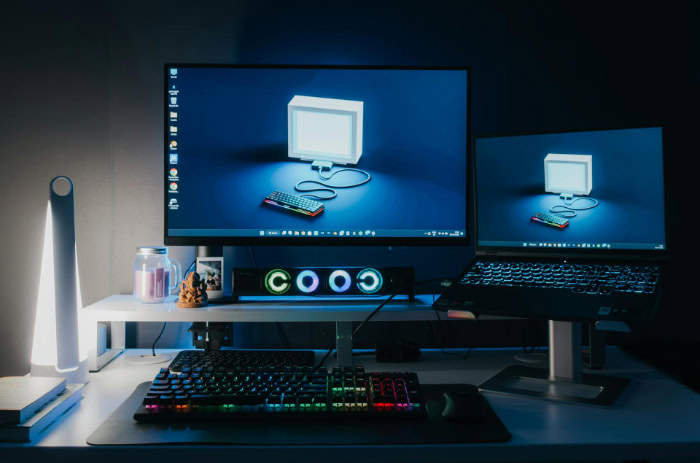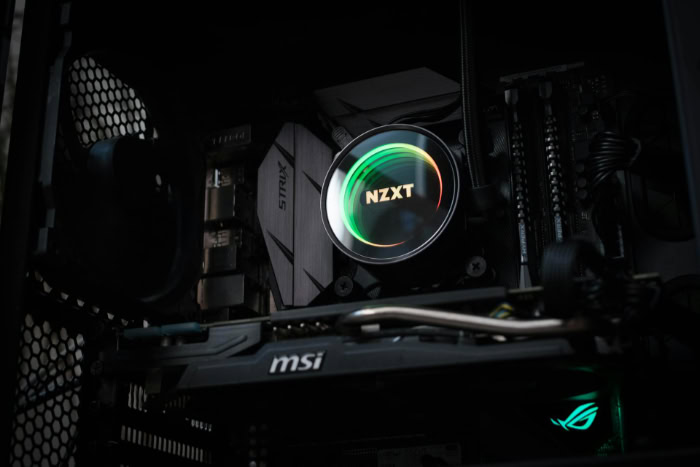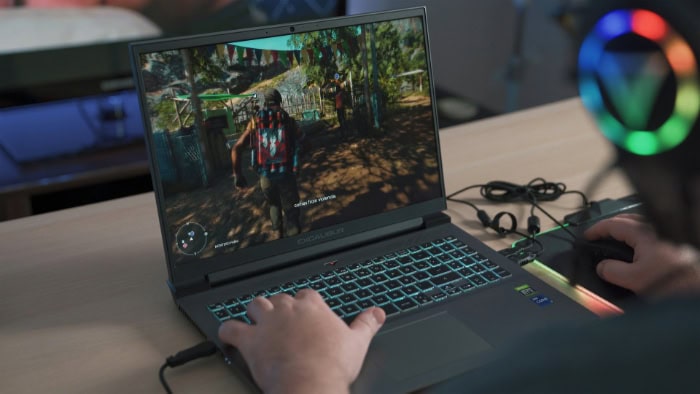Gaming Laptop vs. Gaming Desktop: Which One Suits You Best?

Steam is rising from the world of gaming as enthusiasts of all ages crave the smoothest graphics, fastest load times, and immersive audio. With so many powerful games and competitive titles demanding peak performance, the choice between a gaming laptop and a desktop can feel like the ultimate crossroads for any player.
Each option brings its own strengths and quirks, shaped by factors like raw power, convenience, and value for your money.
Performance and Hardware Capabilities
Gamers demand smooth frame rates, high resolutions, and lightning-fast response times. Achieving all this depends heavily on the power and efficiency of the hardware inside your system.
While both gaming desktops and laptops aim to deliver great experiences, there are significant differences in the components each can house, how they handle intense workloads, and how easily they can adapt to future gaming requirements.
Component Power
Desktops have the distinct advantage of accommodating larger, more powerful parts, with CPUs and GPUs that are optimized for maximum performance. A desktop version of a graphics card like the RTX 4090 features more processing cores and higher power limits than its laptop counterpart, which translates to noticeably better gaming performance, higher frame rates, and the ability to play at ultra settings without compromise.
The same pattern holds true for desktop CPUs, which boast more cores and higher sustained clock speeds thanks to fewer physical and thermal constraints.
On the other hand, gaming laptops use mobile variants of these components. While modern laptops can be impressively fast, the chips are built for efficiency and lower power consumption, so they naturally deliver less performance than their desktop equivalents.
Even top-tier gaming laptops with flagship graphics still trail behind similarly named desktop GPUs, resulting in lower performance in demanding games or heavy multitasking scenarios.
Thermal Limits
Performance isn’t just about raw power; it also depends on how effectively a system manages heat. Desktops benefit from spacious cases, large fans, and advanced cooling solutions like liquid cooling, all of which help maintain stable temperatures during long gaming sessions.
This allows desktops to sustain high performance without running into thermal throttling, where hardware slows down to prevent overheating.
Laptops pack powerful components into much smaller frames, which means heat builds up quickly. To avoid damage, laptops often reduce performance when temperatures rise, resulting in occasional frame drops or slower processing speeds during intense gaming.
Some high-end gaming laptops use advanced cooling technologies, but they still can’t match the consistent cooling and performance of a well-built desktop.
Future-Proofing
Desktops are renowned for adapting to new technology over time. As gaming requirements shift and cutting-edge features become standard, the ability to refresh a desktop with a new graphics card or processor helps keep your system up to speed with the latest advancements.
This flexibility allows desktops to remain viable across several generations of games, software, and hardware improvements.
On the flip side, gaming laptops are built for compactness, which limits upgradability. Most laptops only let users switch out memory or storage, leaving the main performance drivers fixed in place.
When blockbuster titles raise the technical bar, laptop users may find themselves looking for a new machine sooner, especially if their current model can no longer meet recommended specs.
Portability and Space Requirements

Where and how you play can shape your entire gaming experience. The choice between a gaming laptop and a desktop impacts not just game performance, but also your daily convenience, personal space, and the flexibility to enjoy your setup wherever you want.
Some gamers prefer a setup they can take anywhere, while others want the ability to build a dedicated gaming zone at home. Each system’s design comes with its own unique blend of portability, space needs, and usage limitations.
Mobility Needs
Gaming laptops stand out for their sheer portability. Packing considerable gaming power into a slim form factor, they let you join friends for LAN parties, game on breaks at school, or travel with your favorite titles in tow.
Laptops are also a smart solution for students or those living in dorms or shared housing, where every inch of room counts. Their all-in-one design means you only need the laptop and a charger, making setup and teardown fast and painless.
For anyone who values gaming without being tied to one spot, a laptop provides unbeatable flexibility.
Desktop Setup
Desktops, on the other hand, demand more dedicated space. A good gaming rig usually takes up part of a desk, plus room for a large monitor, keyboard, mouse, speakers, and sometimes extras like a microphone or webcam.
This bulkier setup might seem restrictive, but it comes with its own rewards. With a desktop, you can customize your environment with dual monitors, mechanical or ergonomic keyboards, adjustable chairs, and lighting, all aimed at maximizing comfort and immersion.
Dedicated setups often lead to an ergonomic and visually appealing space—perfect for long sessions, streaming, or multitasking.
Battery vs. Stationary Use
One of the biggest trade-offs between laptops and desktops is power supply. Gaming laptops rely on batteries when unplugged, but heavy gaming quickly drains them, sometimes within a couple of hours, and performance may be reduced to save energy.
To get full power, you’ll usually need to keep your laptop plugged in, which limits true portability for longer sessions.
Desktops operate only while plugged into a constant power source. This means no interruptions, lower risk of sudden shutdowns, and no compromises in performance due to battery constraints.
While you lose the freedom to move your setup easily, you gain stability and reliability for marathon gaming or streaming sessions.
For gamers, balancing portability, space, and reliable power shapes the kind of experience you get with each system. Laptops shine for those on the move or limited by space, while desktops excel in comfort, customizability, and uninterrupted gameplay.
Cost and Long-Term Value

Budget is often a decisive factor for gamers, but the numbers on the price tag only tell part of the story. Understanding what you actually get for your investment, how your purchase holds up over time, and where extra costs may sneak in can dramatically influence your satisfaction with a gaming laptop or desktop.
Upfront Costs
Comparing gaming laptops and desktops at similar prices often reveals a performance gap. For instance, a $1,500 desktop typically packs a stronger graphics card, a more robust processor, and better cooling than a laptop in the same price range.
Manufacturers can fit more power into a desktop chassis because space and energy usage are less restricted. Laptops, on the other hand, charge a premium for portability and compact engineering, which means certain sacrifices must be made in terms of raw specs.
If raw power per dollar is your main concern, desktops usually come out ahead, especially in mid- to higher-end price brackets.
Upgradability Costs
Long-term expenses can make a big difference when planning your gaming setup. Desktops offer a practical advantage by letting you replace individual parts as technology progresses, reducing the need for a full overhaul.
Swapping out an aging graphics card or adding a faster processor is usually far less expensive than purchasing a new system, helping you stretch your investment further. In contrast, the limited upgrade routes on laptops mean you’ll likely face full replacement sooner when performance starts to lag.
This shorter upgrade cycle can drive up costs over time, as buying new devices is often the only way to keep pace with the latest games and hardware trends.
Hidden Expenses
Initial cost is just one part of the investment; accessories and extras can add up. Desktops require separate purchases of a monitor, keyboard, mouse, and speakers or headphones, all of which can represent a significant additional outlay.
Some gamers are happy to reuse old peripherals, while others prefer brand new gear tailored to their setup, driving up the total price even further.
Laptops offer an “all-in-one” approach, including a built-in screen, keyboard, trackpad, speakers, and webcam right out of the box. This makes them more convenient for those who want everything in a single purchase, and it may provide more value to students or travelers who might not want to carry a suite of accessories.
However, even laptop gamers sometimes choose to buy external devices for comfort or a competitive edge, but these add-ons are not strictly necessary for basic use.
Thermal Performance and Acoustics

Gaming can push hardware to its limits, making heat management and noise control critically important for both performance and comfort. The design and form factor of desktops and laptops influence how they handle rising temperatures during intense play sessions and how much sound they generate in the process.
Power consumption also becomes a point of consideration, affecting both efficiency and long-term running costs.
Heat Management
Effective cooling is one of the primary reasons many gamers gravitate toward desktops. Towers provide ample space for airflow, allowing the use of larger heat sinks, multiple fans, and even advanced liquid cooling systems.
This generous cooling capacity enables components to maintain higher speeds without the risk of overheating. Gamers can play demanding titles for hours without worrying about thermal slowdowns or reduced frame rates.
Laptops face a unique set of challenges. Their slim, compact chassis restrict airflow, and the cooling solutions are much smaller by necessity.
Even high-end gaming laptops with extra vents and advanced heat pipes often struggle to move hot air quickly enough when playing graphically demanding games. As a result, laptops may throttle their processors or graphics cards, reducing performance to keep temperatures in check.
This limitation is especially noticeable during long sessions or in warm environments.
Noise Levels
Noise can shape your gaming environment just as much as visuals or controls. Desktops, with their larger fans and more efficient cooling systems, typically run quieter even under load.
Many setups allow for fan adjustments, and performance-oriented desktop coolers are designed to keep noise to a minimum, making them well suited for streamers, content creators, or anyone who enjoys a quiet workspace.
Laptops, on the other hand, often get noticeably louder during heavy gaming. Smaller fans have to spin much faster to keep temperatures under control, resulting in a constant hum or even a whirring sound that can be distracting.
While newer gaming laptops have made progress with quieter fans and smart cooling profiles, they still cannot match the near-silent operation possible with a well-ventilated desktop.
Power Consumption
Power efficiency matters both for your monthly electricity bill and for environmental reasons. Laptops generally consume less electricity thanks to energy-efficient mobile components.
This makes them more eco-friendly and less costly to run, especially if you do more than just game on them.
Desktops, in contrast, draw more power from the wall due to stronger CPUs, GPUs, and more expansive cooling systems. Serious gaming desktops can use several hundred watts during intense gaming sessions, which adds up over time.
This higher energy demand means desktops might cost a bit more in electricity, especially for users who game frequently or keep their systems running for extended periods.
Conclusion
Choosing between a gaming laptop and a desktop comes down to what matters most for your gaming lifestyle. Desktops shine with pure performance, superior cooling, easier upgrades, and more value for your money, making them the go-to option for enthusiasts who crave high frame rates, want to play at 4K, or enjoy customizing every aspect of their setup.
They reward users looking for long-term investment and the flexibility to keep their machine up to date.
Laptops, however, win in flexibility and convenience. If you need to game on the move, share space, or tackle classes and work in addition to gaming, a laptop's portability and all-in-one nature are hard to beat.
They fit seamlessly in tight spaces, travel easily, and get you gaming without a pile of accessories.
So, what should you pick? Go for a desktop if you want maximum performance, future-proofing, or a fully customizable gaming station at home. Opt for a gaming laptop if you value mobility, need a compact solution, or plan to move between different environments often.
Each path offers a fantastic gaming experience tailored to different lifestyles, letting you match your system to your needs and ambitions.


